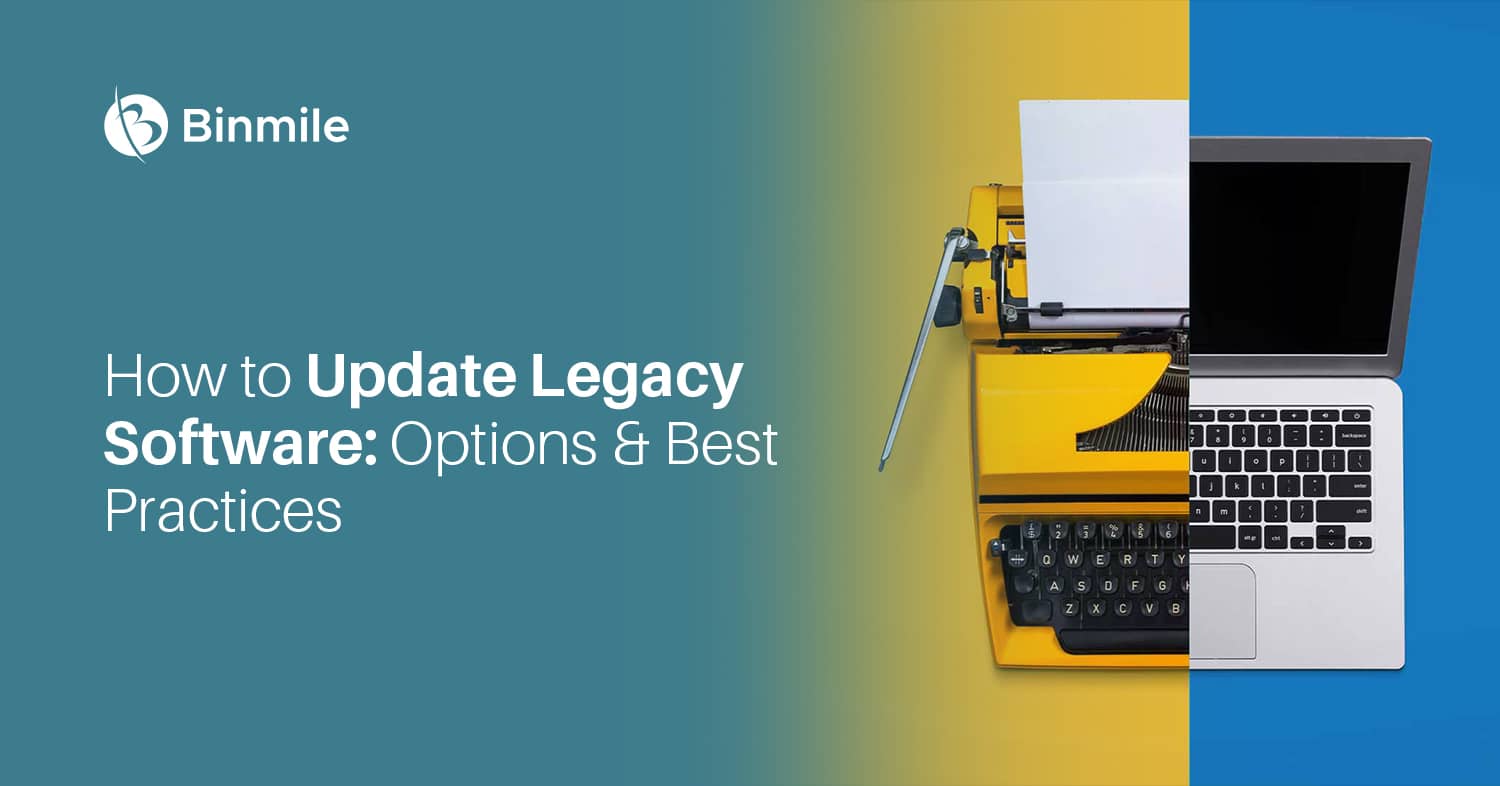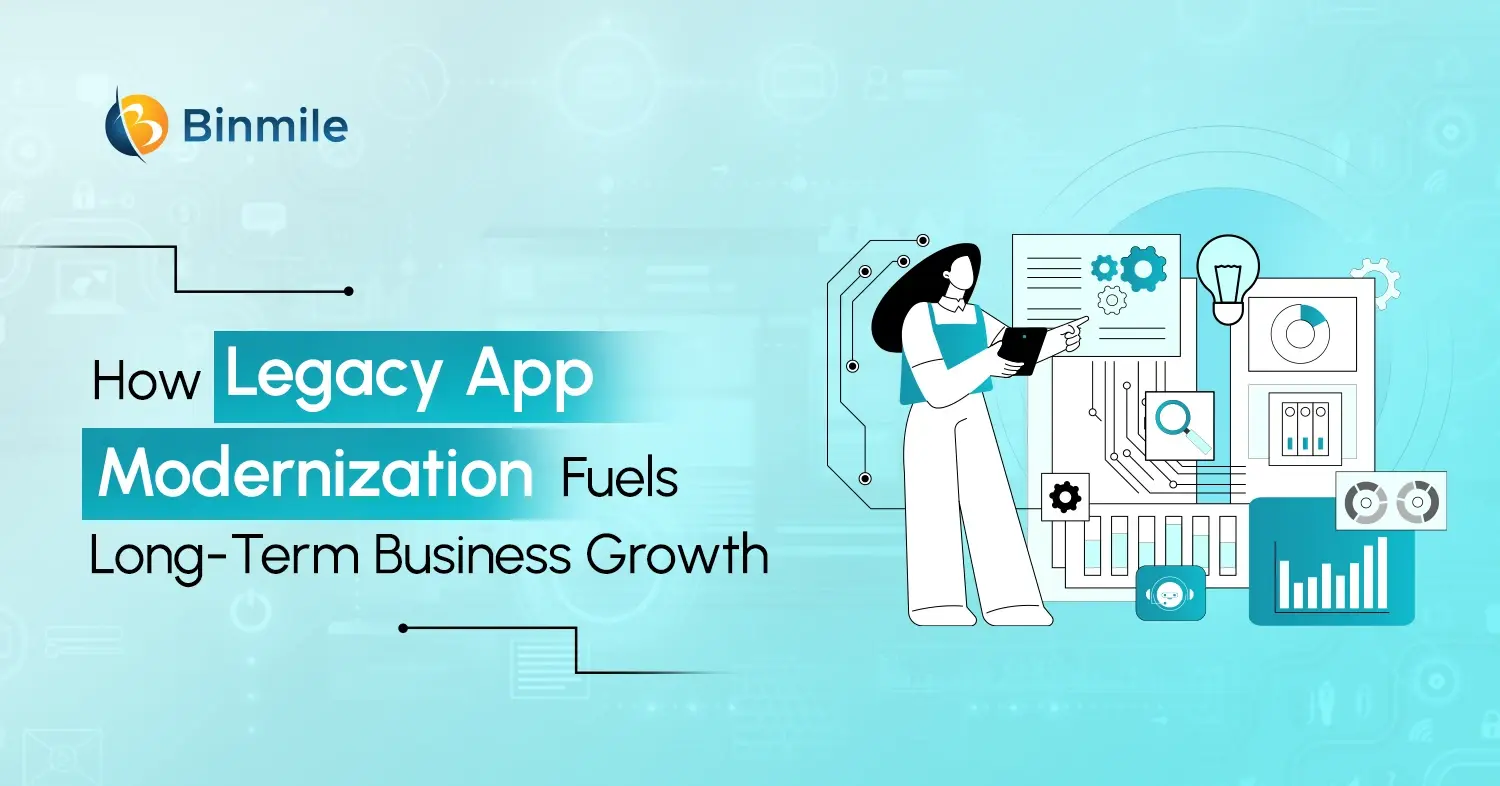Tired of working with old software that slows you down and stops you from moving forward? It’s time to break out of the limits of old systems and accept how legacy software updates can change things. In this blog, we’ll talk about the different ways to update old software, the best ways to do it, and the benefits of doing so.
So buckle up, because we’re about to go on an exciting journey toward change!
Comprehending Legacy Software Updates

In fact, it’s important for growth and change that old systems are kept up to date. By keeping the software up to date, you can use the newest technologies, make it more useful, and stay ahead of the competition. Correspondingly, these changes help bridge the gap between old and new ways of doing things, which makes it easier to move forward.
Significance of Legacy Software Updates
In fact, transforming old software is important for more than one reason. First, it makes sure that your software is still compatible with hardware and running systems that are constantly changing. Second, it fixes security holes, which keeps your important data safe from possible attacks. Last but not least, updates give you access to new features and improvements that help you improve processes and work faster.
Compatibility with Developing Technology
- More often than not, it is important to make sure that your software works with the latest hardware and running systems.
- By keeping your program up to date, you can take advantage of changes in technology and use new features and functions.
Handling Security Vulnerabilities
- Regular changes help fix security flaws and close known spots, which makes it less likely that someone will get in without permission or steal data.
Unlocking New Features and Improvements
- Software updates often bring new features, enhancements, and performance improvements that can greatly benefit your organization.
- By actively updating your application development services, you can optimize workflows, streamline processes, and boost overall efficiency.
Challenges Associated with Legacy Software Updates

Updating legacy software presents several challenges, but with the right approach, these hurdles can be overcome. Let’s delve into the key challenges and explore effective strategies to address them:
Compatibility Issues
- Legacy software’s reliance on outdated technologies or lack of compatibility with modern hardware and operating systems can impede the update process.
- To tackle this challenge, conduct a thorough compatibility analysis, identifying potential issues. Options such as software refactoring, migrating to a new platform, or employing compatibility layers can be explored.
Data Migration Complexities
- Migrating significant amounts of data from legacy systems can be complex and time-consuming, requiring careful handling of data formats, structures, and integrity.
- Develop a comprehensive data migration strategy, including data cleansing, transformation, and verification. Streamline the process using automated tools and scripts, ensuring data accuracy and integrity. Thorough testing and validation are crucial prior to completing the migration.
Compliance Concerns
- Legacy software updates must comply with industry regulations, such as data privacy or security standards, to avoid legal and financial consequences.
- Conduct a compliance assessment, identifying the specific regulatory requirements. Align the updated software with the necessary standards and implement robust security measures. Collaboration with legal and compliance experts ensures adherence throughout the update process.
Legacy Code Complexity
- Outdated software often contains complex and poorly documented code, hindering understanding, modification, and updates.
- Perform a comprehensive code analysis to gain a clear understanding of the existing codebase. Prioritize code refactoring to enhance quality, maintainability, and reduce technical debt. Simplify future updates by introducing proper documentation and adopting modern development practices.
User Acceptance and Training
- Users accustomed to the legacy system may face resistance and a learning curve when introduced to updated software.
- Engage end-users early in the update process, gathering their feedback and addressing concerns. Provide comprehensive training and support to facilitate a smooth transition. Effective communication highlighting the benefits of the updated software encourages user acceptance.
Effectiveness of Updating Legacy Software

The usefulness of updating legacy software is abundant, offering numerous benefits that actively enhance various aspects of your organization. Let’s delve into these advantages, highlighting how software updates drive positive outcomes.
Enhanced User Experience
- By updating your software, you actively improve the user experience, ensuring it remains intuitive, efficient, and user-friendly.
- Moreover, updated software provides users with seamless navigation, enhanced functionalities, and an overall improved interface.
Boosted Productivity
- Software updates often introduce new features, performance improvements, and streamlined workflows that empower your team to work more efficiently.
- Additionally, these updates enable users to complete tasks faster, collaborate seamlessly, and access the latest tools and technologies.
Streamlined Operations
- Updated software optimizes and streamlines various operational processes, eliminating inefficiencies and bottlenecks that hinder productivity.
- Furthermore, these updates enable organizations to automate tasks, integrate systems, and improve overall efficiency across departments.
Minimized Downtime
- Regular software updates address glitches, bugs, and performance issues that can cause system downtime and disrupt daily operations.
- Consequently, organizations experience reduced downtime, ensuring uninterrupted business continuity and improved customer satisfaction.
Agility and Adaptability
- By staying up to date with software updates, your organization showcases its agility and ability to adapt to changing market demands and emerging technologies.
- Furthermore, these updates enable businesses to respond promptly to industry trends, customer needs, and regulatory changes.
Competitive Edge
- Embracing software updates positions your organization as a forward-thinking entity, setting you apart from competitors still reliant on outdated systems.
- Moreover, updated software equips you with the latest tools and functionalities, empowering you to meet customer expectations and drive innovation.
Also Read: Data Modernization Strategy for BFSI
Options for Updating Legacy Software
Let’s explore these options in detail, highlighting their benefits and potential outcomes.
Migration to a New Software System
- Transitioning to a new software system offers a fresh start and an opportunity for innovation. It allows you to reimagine and rebuild your software using modern technologies and best practices.
- Moreover, this option enables organizations to overcome the limitations of legacy systems, embrace scalability, and leverage advanced features.
Refactoring and Code Improvements
- Refactoring involves restructuring and optimizing the existing codebase without changing its external behavior. It helps improve code maintainability, readability, and performance.
- Additionally, code improvements ensure scalability, reduce technical debt, and enable easier future updates and enhancements.
Version Upgrades and Patching
- Upgrading to the latest version of your software or applying patches allows you to benefit from new features, bug fixes, and security updates provided by the software vendor.
- Transition words: Furthermore, this option ensures your software remains up to date, compliant with industry standards, and fortified against emerging security threats.
Modernization through Cloud Adoption
- Migrating legacy software to the cloud offers scalability, flexibility, and enhanced accessibility. It enables efficient resource utilization, automatic updates, and simplified maintenance.
- By and large, cloud adoption empowers organizations to leverage scalable infrastructure, access modern services, and optimize costs.
Integration with Third-Party Solutions
- Integrating legacy software with third-party solutions and APIs can enhance functionality and extend the capabilities of your system. It allows you to leverage specialized services without a complete system overhaul.
- Subsequently, this option provides opportunities for seamless data exchange, process automation, and improved collaboration.
User Interface (UI) and User Experience (UX) Enhancements
- Updating the UI and UX of legacy software can modernize the look and feel, improving usability and user satisfaction. This can involve redesigning interfaces, simplifying workflows, and incorporating user feedback.
- Furthermore, these enhancements enhance user engagement, streamline workflows, and facilitate a positive user experience.
Best Practices for Updating Legacy Software
Start with a comprehensive software audit and assessment to gain a clear understanding of the current state of your software. Develop a well-defined update strategy that aligns with your business goals. Test and validate changes in a controlled environment to minimize risks. Lastly, implement updates gradually, ensuring a smooth rollout across your organization.
Comprehensive Software Audit and Assessment
- Conduct a thorough software audit and assessment to gain a clear understanding of the current state of your software, including its architecture, dependencies, and potential areas for improvement.
- Above all, this assessment helps identify any technical debt, outdated components, or performance bottlenecks that need to be addressed during the update process.
Well-Defined Update Strategy
- Develop a well-defined update strategy that aligns with your business goals and objectives. This strategy should outline the scope of the update, desired outcomes, timelines, and resource allocation.
- Additionally, a well-defined strategy ensures clarity, establishes expectations, and guides the entire update process.
Testing and Validation
- Before implementing the updates, thoroughly test and validate the changes in a controlled environment. This helps identify and mitigate any potential issues or conflicts that may arise during the update.
- Furthermore, rigorous testing ensures that the updated software functions as intended, minimizing disruptions and user frustration.
Gradual Implementation
- Implement updates gradually, starting with pilot projects or a subset of users. This allows for iterative feedback and fine-tuning, ensuring a smooth rollout across the organization.
- Moreover, a gradual implementation approach minimizes the impact on daily operations, provides opportunities for user input, and allows for timely adjustments based on real-world usage.
Ensuring Compatibility and Mitigating Risks
- Assess system compatibility and dependencies to ensure a seamless update. Handle data migration and integration carefully to avoid data loss or corruption, and address security and compliance concerns to protect sensitive information.
- As a result, these precautions minimize risks, maintain data integrity, and ensure a smooth transition to the updated software.
Monitoring and Maintenance
- Regularly monitor the performance of the updated software and proactively address any issues that arise. Stay informed about software patches and updates to address emerging security vulnerabilities promptly.
- Likewise, ongoing monitoring and maintenance optimize the software’s performance, enhance security, and provide a positive user experience.
To Summarize
Breaking free from the confines of legacy software opens up a world of possibilities. By embracing software updates, you propel your organization towards enhanced efficiency, increased security, and improved competitiveness.
With the right options, best practices, a suitable legacy software modernization company and careful consideration of compatibility and risks, you can navigate the update process successfully. So, bid farewell to outdated systems and embark on an exciting journey of software modernization, where innovation and growth await!
Remember, the key to a successful update lies in taking the first step. Embrace the transformation and unlock the true potential of your software!









